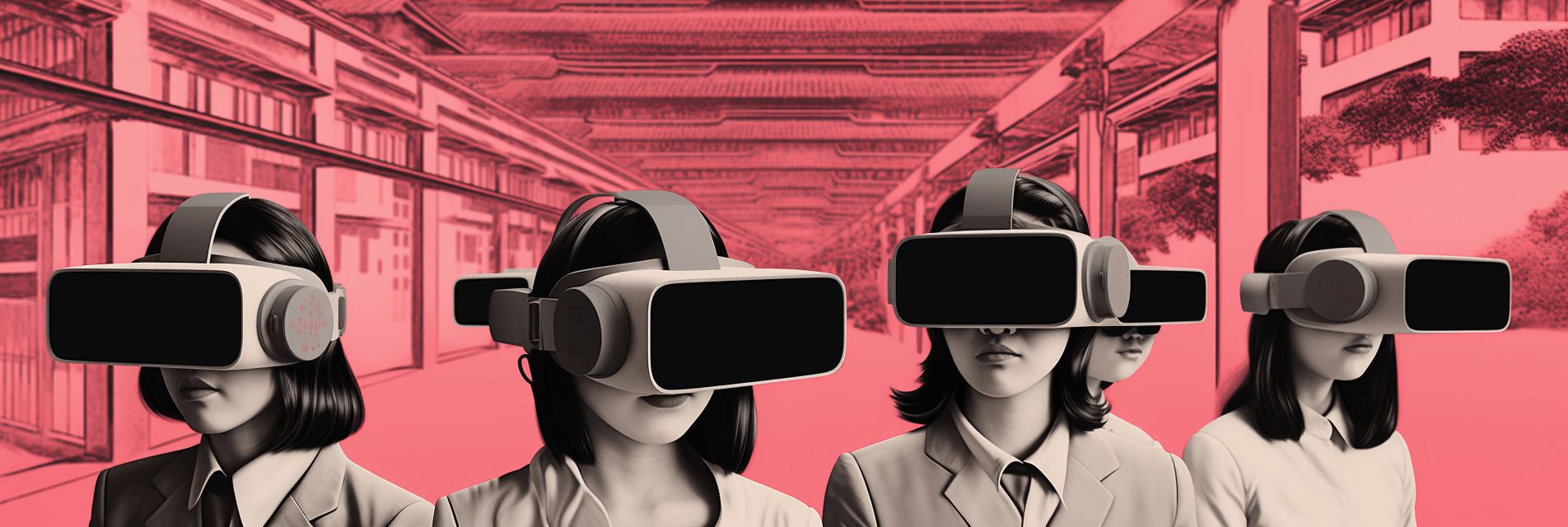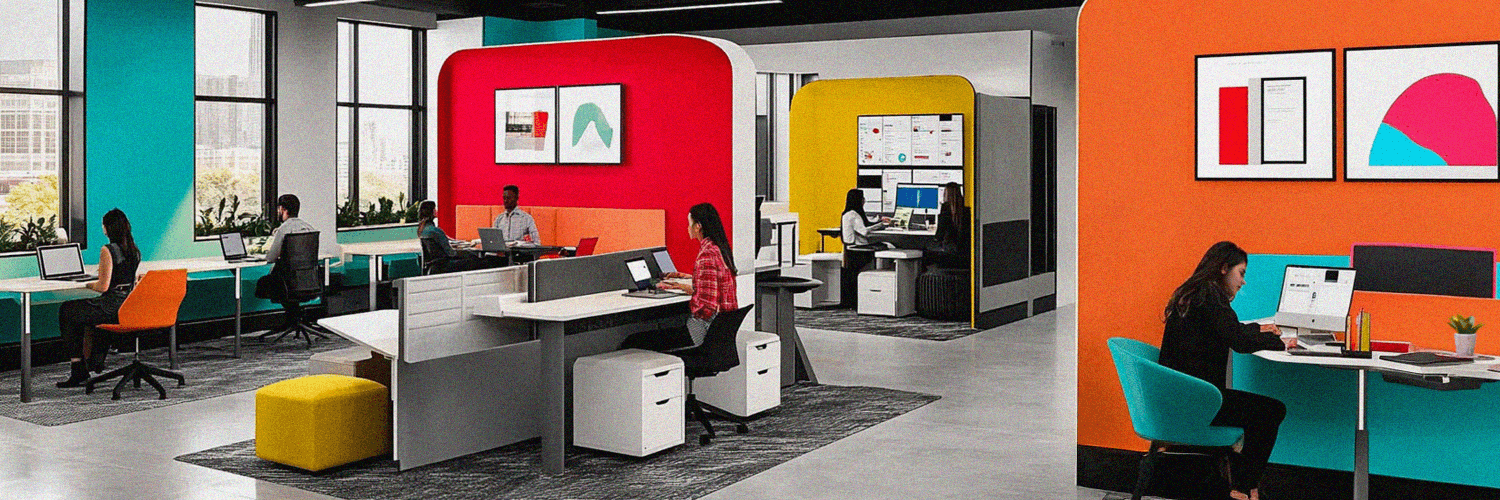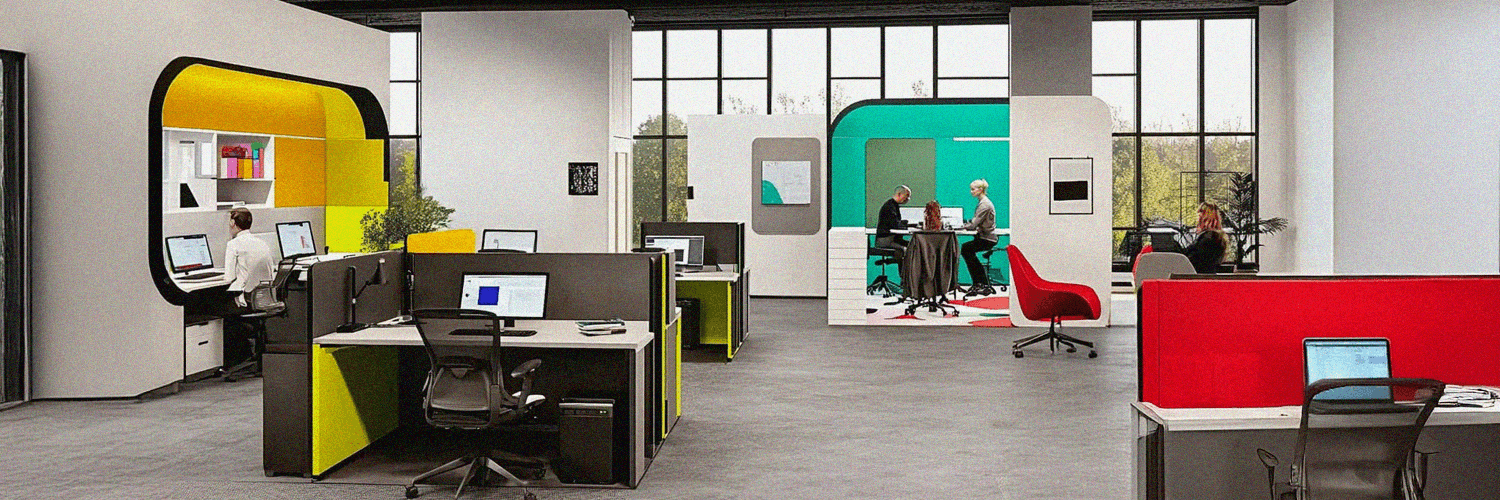"Smart office space" seems on everyone's lips these days. And although there are many reasons to believe it's just another buzzword, there are just as many to make you consider embracing a smart office.
So, what is a smart office space? Why would you invest time, money, and effort into it? And how do you do it?
We're deep-diving into smart office space features here, so buckle up and keep reading!
Smart Office Spaces: What Are They?
A smart office space is one where technology seamlessly integrates into the office environment. It speeds up workflows, makes communication more efficient, and generally makes the working day easier for employees and management/ leadership.

What Makes an Office Space Smart?
Here's where things get...interesting.
"Smart" is a very loose label these days. You know what a smart TV is, or a smartphone. But when it comes to larger, more complex things like offices, there are various elements and features to consider.
As a general rule, office space is smart if it's equipped with technology that enables, augments, and supports your work, ideating, and product delivery. Whether you work in a SaaS, manufacturing, or virtually any other business, a smart office should make your work simpler and more efficient.
You don't have to hit all the "smart office" points on any list -- but if you strive to implement some of the more important ones, you should be well on your way. Some smart office elements you could embrace with relative ease include:
Automated Lighting
Smart lighting is one of those features that can make a noticeable difference in how productive and comfortable your employees are during the day. Automated lighting solutions can detect motion within the office and respond accordingly, dimming or brightening up to create just the right atmosphere.
Employee & Visitor Check-In
This is a pretty easy one, but it can save you time and money and keep you compliant. Employee and visitor check-in systems allow you to keep track of who's in the office, how long they've been there, as well as collect basic information (like their name and scope of visit). Plus, they can often be integrated with other systems like time tracking.
Smartphone-Controlled Temperature
Modern HVAC systems are becoming increasingly sophisticated and can be managed easily with an accompanying mobile app. Employees can adjust the temperature in their immediate vicinity to create a comfortable working environment, while management can monitor and adjust the system from afar.
Interactive Floorplans for Optimized Workspace Utilization
Interactive floorplans act as digital blueprints, reshaping how personnel interact with their surroundings on-site. These sophisticated layouts offer real-time visibility into available desks, meeting rooms, and quiet zones—and even let users reserve spots before entering the building!
Fault Reporting and Support Request Streamlining Systems for Quick Issue Resolution
Speedy resolution to office malfunctions is pivotal in maintaining workflow fluidity; modern office equipment powered by fault reporting platforms can deliver just that. These systems enable employees to report issues from their devices directly to maintenance teams, who can address them promptly. Picture this:
- An employee spots a malfunctioning printer.
- They use their smartphone to log the issue.
- The system automatically notifies appropriate personnel.
- Repair work begins swiftly due to detailed, real-time reports.
As office-smart as it seems, this feature accelerates troubleshooting and maintains operational continuity with minimal downtime.
Voice Assistants
Whether it's Amazon Echo or Google Home, voice assistants have become commonplace in both homes and offices. With voice-activated working tools, you'll be able to perform simple tasks without learning complicated software. Plus, it can help keep your office more organized and efficient.
Flexible Seating & Desk Configurations
Gone are the days when everyone had to sit at their desk. Flexible seating and desk configurations can make the office more comfortable, while also enabling remote working. Plus, it will free up valuable space for other creative projects or events.
Desk Booking Software for Flexible Seating Arrangements
Harnessing desk booking software holds the keys to unlocking true flexibility when allocating hot desks or permanent stations across teams dynamically adjusting sizes based on projects at hand—a modal shift dubbed ‘activity-based working’.
Meeting Room Management Software for Streamlined Scheduling and Resource Allocation
Smoothly booking a meeting venue without unnecessary emails or phone calls no longer hovers in the realm of fantasy; it's a reality enabled by smart office technology. With meeting room management software at your fingertips:
- Employees easily check room availability and make reservations.
- Administrators oversee the usage patterns to optimize space allocation.
- Equipment needed for meetings can be scheduled concurrently with room bookings.
This seamless integration ensures not just saved time but also improved productivity—each meeting starts on time without last-minute scrambles for space or tech snafus.
Colleague Finding Tools for Locating Coworkers within the Workspace
Have you ever found yourself wandering around, searching for a colleague in a labyrinth of desks? Colleague-finding tools curtail these quests significantly. What is a smart office, if not one, where you can instantly pinpoint colleagues' locations via an app or desktop interface? This nifty feature saves time and fosters collaboration across departments, breaking down physical barriers within expansive or intricate office layouts.
Interactive Whiteboards & Touchscreens
If you're looking for a way to make ideation and collaboration more efficient, interactive whiteboards and touchscreens can be a great addition to your office. They're easy to use and enable multiple people to work on projects together, in real time.
Smartphone-Adjustable Desks
Comfort and health should always be a priority, especially if you want to keep your employees happy and productive. Smartphone-adjustable desks allow people to adjust their desk to the perfect height from anywhere in the office, so they can maintain better posture and stay efficient.
Sensors and Other Hardware Devices for Capturing Environmental Data
Embedded throughout is another realm where sensors and sleek devices discreetly monitor and regulate the lifeblood of an organization: its environment. From temperature control to occupancy levels, these unsung heroes gather essential data points used variously:
- To tailor HVAC operations, reducing energy consumption while maximizing comfort.
- To collect occupancy data affecting cleaning schedules and enhancing facility hygiene standards.
By adopting these instruments, businesses encapsulate what epitomizes dynamic adaptation—allowing them not merely to react but proactively evolve with emerging workplace expectations.

The Benefits of Smart Office Spaces
Smart offices are popular now for a very good reason -- they can make all the difference to your business. Here are just some of the benefits:
Increased Productivity
Smart office technologies can help employees do their jobs more efficiently, with faster communication, improved collaboration, and better time management. For example, embedding a cloud-based communication and collaboration platform into your office environment can make it easy for employees to communicate and collaborate.
Better Collaboration
Crucial among the benefits of transitioning to smart office spaces is improved productivity. In such a setting, employees can use applications to manage and monitor their workflow seamlessly. Often leveraging Internet of Things (IoT) technologies, these applications seamlessly integrate functionalities like task scheduling, time tracking, or even office tracking for available resources. Such conveniences significantly minimize interruptions in workflow and foster an environment conducive to high productivity levels.
Enhanced Security
Smart offices tend to be more secure, especially from a cybersecurity perspective. The reason behind this is that smart office technologies often come with built-in security measures, such as secure access forms, encrypted data transfer, and two-factor authentication.
Higher Employee Satisfaction
Smart offices can have a positive effect on employee morale. By providing the tools and technology necessary for employees to work more efficiently, you show them you care about their time and energy. As a result, they will be happier and more productive at work -- and you'll be able to improve your employee retention too.
Improved Data Collection
This is not about being a "Big Brother." With smart office technologies, you can collect data about employee performance, office use, customer behavior, and other metrics without intruding on people's privacy. This allows you to make better decisions and optimize your processes.
More Cost-Effective Operations
A smart office is an investment. But, when you look at the long-term benefits of improved productivity, enhanced security, higher employee satisfaction, and improved data collection -- it's worth it.

How to Make Your Office a Smart Office: 10 Must-Have Features
Let's say you're sold on a smart office; now what? What are some of the features that will make your office space "smarter"?
Access Control
Access control refers to the systems in place to control access to certain areas of the office and/or certain data. You can put in place user authentication, access logs, and other measures to ensure the security of your office.
Sensors & Other Hardware
Sensors can gather data on office use, such as temperature and light levels. You can also equip your office with other pieces of hardware, such as interactive displays that can enhance collaboration and communication.
Interactive Floor Maps
Interactive floor maps can help employees and visitors navigate the office space more easily. They can also provide information about available workspaces, services, events, and more. This type of tech can help you with workplace visibility, as it will be easy to see who is in the office at any given time.
Desk and Room Booking Solutions
Desk and room booking solutions make it easier to manage office bookings, such as meeting rooms and hot desks. Furthermore, tools like Yarooms can do a lot more, like desk booking, collecting office space analytics, and more. This can help boost productivity in the office, avoid friction, and keep your team with their eyes on the price.
Work Planning Solutions
Work planning solutions make it easier for you to plan, assign tasks, and monitor progress. This will give your team a better overview of what needs to be done and when helping them stay on top of their work.
For instance, our hybrid work scheduling feature enables employees and leadership to manage office space in hybrid workplaces and juggle the alternation between in-office and remote work. Having an overview of where everyone is working on any given day can help you improve processes, save money, support productivity, and make better business decisions going forward.
Tools for On-the Go Scheduling
There are 6.8 billion smartphone owners in the world, which makes it extremely likely that your employees are among them. The right tools can allow you to manage work schedules, set tasks and track progress from anywhere. This is especially useful for remote and hybrid teams, but it isn't beneficial exclusively for them.
For instance, the Yarooms mobile app allows you to schedule booking rooms and work desks on the go, wherever you are. This way, everyone can update their work status and work location, even when they're not in front of a computer.
Visitor Management Solutions
If your office is client-facing or you have frequent visitors, it’s important to have a reliable system for managing visitor check-ins. Visitor management solutions like Yarooms Lobby Display & Digital Reception enable you to offer a seamless check-in process to anyone walking into your office -- whether it's clients, remote workers who only come in every quarter, or candidates for new job openings. What's more, our system also allows you to check visitors in securely, so your company can stay compliant across different data privacy regulations and legislations.
Workplace Analytics
Workplace Analytics can be a goldmine of information for the entire company. Your HR department will be able to collect data on how employees use office space and pinpoint ways to improve productivity, while your finance team can evaluate the cost-effectiveness of your office space.
For instance, Yarooms Workplace Analytics features can help you build a better, more productive, and more financially-savvy work environment -- for you and your employees.
Integrations
It's not enough to have a tool and collect data. Your toolstack should function like a perfectly oiled machine -- so integrations are absolutely crucial to maximize their effectiveness and value. Tools like Yarooms are designed to integrate with your work tools, like Microsoft Teams, for example. This kind of feature fosters better collaboration and efficiency at work, allowing your teams to know where they are, plan their meetings better, and focus on giving their very best on every task and project.
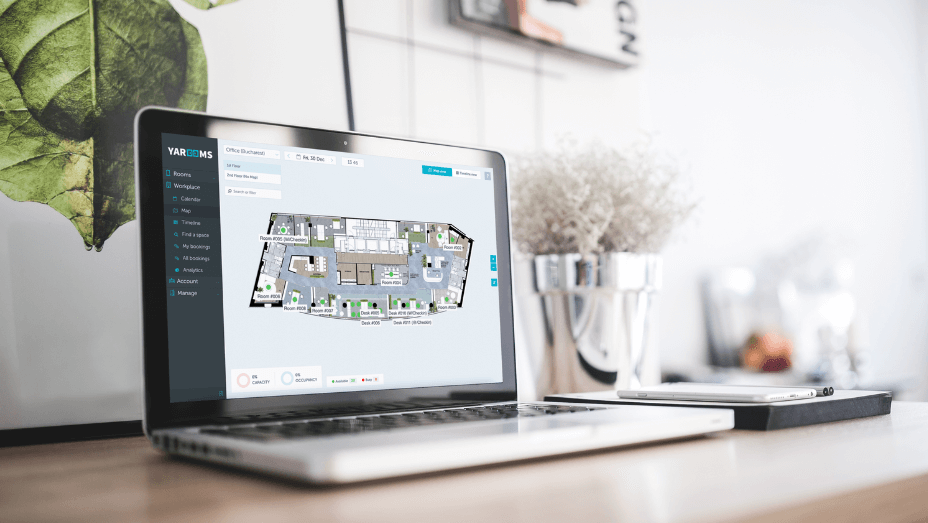
Smart Office Technology Trends
As a linchpin in evolving the office place, smart office technology trends are redefining what a workplace should resemble.
Internet of Things (IoT)
The first remarkable trend steering the idea of smart offices is undoubtedly the Internet of Things. IoT devices enable extraordinary interconnectivity within offices by permitting an exchange of data between devices over the internet. IoT has created arguably one of our generation's most fundamental infrastructure shifts, paving the way for intuitive and intelligent workspaces.
Do you have an indoor plant that needs watering? No more depending on your memory or guesswork! A moisture sensor connected to your smart office system can easily handle that. What about registering everyday employee attendance? Simple — with IoT-backed smart tracking systems working 24/7 whenever any badge swipes at the door.
This level of automation and communication among devices frees up time for workers to focus on creative and complex tasks and fosters productivity leaps.
Artificial Intelligence (AI)
Artificial intelligence is another revolutionary trend shaping our perception of what constitutes a 'smart office.' AI can automate numerous administrative tasks while implementing predictive analytics to guide decision-making processes. This allows companies utilizing AI to stay competitive and drive exponential growth.
Imagine having a virtual assistant integrated into your operations — managing calendars, scheduling meetings, or drafting emails— all achieved through voice command. AI solutions like conference room software can also monitor usage trends or patterns, enabling optimal utilization without human intervention in real-time.
AI is here to usher in an era where mundane tasks cease being obstacles to productivity and become accelerants powering office efficiency.
Augmented Reality (AR) & Virtual Reality (VR)
These innovations foster immersive experiences that revolutionize how teams collaborate irrespective of their location globally.
For instance, Virtual Reality negates distance barriers, facilitates remote training experiences, and makes meetings more interactive. On the other hand, Augmented Reality overlays digital information onto our real world, transforming how we engage it.
Imagine design professionals using AR glasses to prototype a new product virtually or teams across continents conducting productive brainstorming sessions via VR technology. By creating an engaging and interactive space for team collaboration, these technologies intensify creativity through intuitive visualization tools — marking them as undoubtedly top contenders in smart office trends.
Sustainable Workplace Technology
Like it or not, environmental issues shouldn't be ignored anymore -- and it's our duty, individuals and businesses to address them. Sustainable workplace technology can help you do that while also reducing your office's costs, building an environmentally-friendly brand you can be proud of, and attracting talent that's on par with you when it comes to these matters.
Challenges Faced in Implementing a Smart Office
Delving into the world of smart office spaces might seem thrilling, brought abuzz with various state-of-the-art technologies. But it's crucial to remember that leaping headfirst without understanding its potential challenges can lead to serious difficulties later on.
Costs
Undeniably, transitioning from a traditional workspace to a smart office involves considerable financial investment. This is not merely about purchasing cutting-edge technology or smart tracking devices but also incorporates unexpected expenses.
First, renovating physical spaces to make room for advancements like IoT integration may command hefty sums of money. Additionally, implementing AI technologies or AR solutions warrants high upfront capital expenditures as these aren't necessarily low-priced choices.
Secondly, maintenance costs shouldn't be ignored either. Regular upkeep is required as part of the cost factor when using state-of-the-art tech equipment, including replacing outdated or defective machines.
Lastly, don't dismiss the essential role of training - educating employees about registering their profiles in an upgraded system or how to use a new smart office login portal requires both time and resources.
Data Security & Privacy Concerns
Despite being seemingly at odds with each other when considering functionalities and convenience versus confidentiality risks - data security and privacy are massive challenges businesses today face in implementing a smart office.
With an increased volume of data flowing through interconnected devices and applications in such an environment (remember IoT connectivity?), there's always a heightened risk of unauthorized access or cyber-attacks.
Further complicating matters is the incorporation of wearables and personal devices into office tracking systems. Should these gadgets get stolen or misplaced unexpectedly, sensitive company information could end up in unintended hands quite quickly.
Since breaches or misuse can potentially lead to drastic consequences, including reputational damage and legal issues - ensuring sturdy protection against ever-evolving threats must be a top priority.
To address this, businesses must establish robust firewalls and data encryption processes and advocate for solid employee policies around security compliance. They should consider engaging experts for risk analysis and regularly conduct audits to identify any potential vulnerabilities in the system.
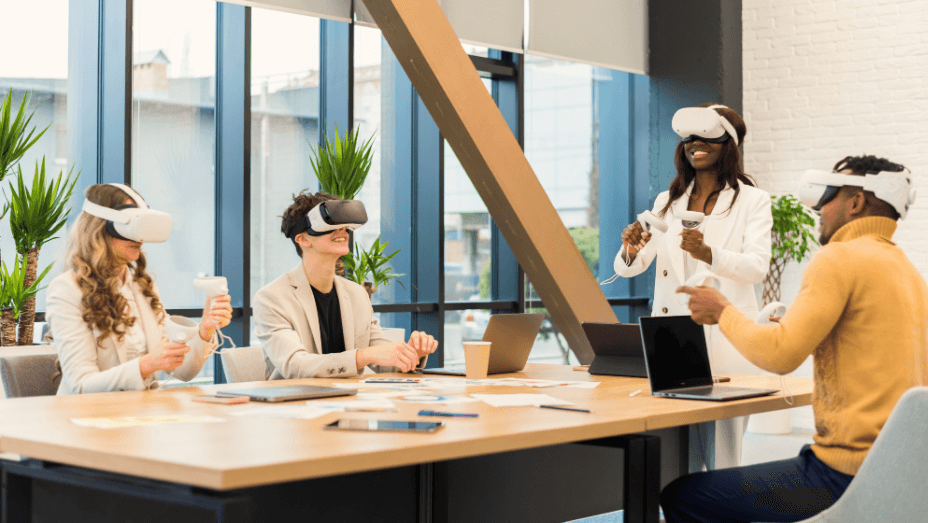
Best Practices for Implementing a Smart Office
Transforming your standard office into a smart office is a challenging task. It requires strategic planning and careful implementation to maximize its potential benefits. Here are the essential practices that can guide you in establishing your smart office.
Develop a Plan & Set Goals
Like any significant endeavor, setting up an intelligent workplace starts with creating a detailed plan followed by clearly defined goals. Firstly, understanding what constitutes a smart office is fundamental. It goes beyond incorporating high-end gadgets; it's all about using technology to make processes seamless, employees' lives easier and better, and work more productive.
- Establish clear objectives: Understand why you want to move toward a smart office setup. Is it cost savings? Enhanced security? Faithful registering of resources? Or increased collaboration or improved productivity via top-notch office tracking tools? Once these goals are set, align them with specific technologies or solutions.
- Create milestones and timelines: Rome wasn't built in one day, just as the perfect smart office will require time and patience. Formulate phased steps for execution while considering your resource capacity (finances and workforce).
Choose the Right Technologies & Partners
Once the mission is clear, choosing the right technologies becomes easier. Picking suitable technological partners can significantly affect how smoothly your transition goes toward becoming a truly 'smart' space.
- Select versatile technology: To add sanction behind the term 'smart,' technologies should ideally integrate easily with existing systems within your organization.
- Data analytics capabilities: A corresponding element of moving towards this new frontier involves leveraging collected data to improve operations—monitor how desks are used or unused during various times of the day using different monitoring devices.
- Consider the reliability of tech providers: Dependable tech partners should always offer support from implementation through troubleshooting issues post-installation with robust follow-up mechanisms.
Train Employees on the New Technologies & Processes
Training is crucial when introducing any new system to your team. The power of your smart office lies in its user interface: if employees cannot effectively use new tools, ROI decreases.
- Create comprehensive training programs: Training initiatives should cater to varying levels of tech-savviness among the workforce. Hands-on sessions where employees can actively familiarize themselves with smart tracking and other technology for the office increase uptake rates.
- Continued learning: Schedules permitting, companies could consider continuous training on newer functionalities or updates through webinars or online tutorials posted by tech providers.
- Provide support resources: This entails not just user manuals or troubleshooting guides but also access to a knowledgeable IT department that can promptly address queries without much delay.
"Smart office" is no longer a buzzword, but a legit, viable, and necessary strategy for businesses of all sizes. By investing in the right technology, you can improve processes, reduce costs and increase productivity -- while also making sure your employees are the best they can be.
From scheduling to visitor management, workplace analytics, and integrations, there are many different tools you can incorporate into your office workflow. However, always remember to use your technology with purpose, with an eye towards sustainability and the well-being of your employees. There's no point in being "smart" if you can't use it for better purposes -- whether it's the well-being of your team or that of the environment.
